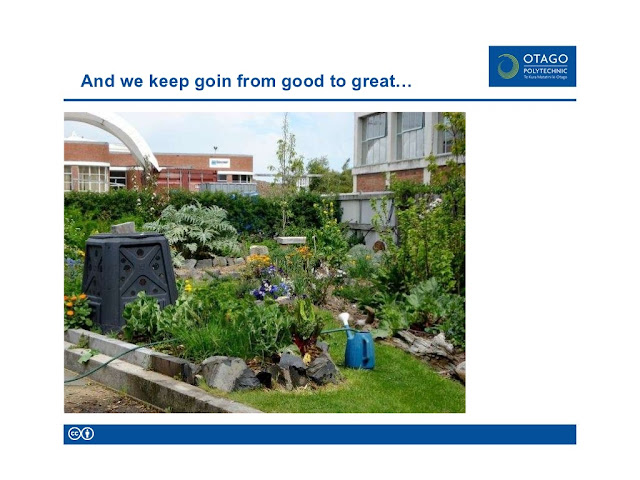Actual Temperature
18 degrees Celsius
Humidity : 85%
Rainfall : 0.00mm
Wind : Strong wind
The morning class was with Lisa Burton on Organic Unit and we went field trip to Shetland Street in Kaikorai Valley, the organic community gardens engages in a range of projects, including native plant propagation, vegetable growing, seed saving etc. Work days are Tuesday and Thursday 11:00am till 3:00pm. Anyone is welcome to come along on these days to lend a hand and check out the latest projects that are on the go. You can also buy cheaply priced native seedlings. Contact Person Hendrik Koch PH: 4780311 The gardens are part of the Dunedin Environment Centre Trust.
Community gardens provide fresh produce and plants as well as satisfying labor, neighbourhood improvement, sense of community and connection to the environment. They are publicly functioning in terms of ownership, access and management.
Community gardens may help alleviate one effect of climate change, which is expected to cause a global decline in agricultural output, making fresh produce increasingly unaffordable. Community gardens encourage an urban community's food security, allowing local to grow their own food or for others to donate what they have grown.
We went around to visit Community Garden at Shetland Street all types seedlings in greenhouse, seedling of native trees, composting and vegetables garden. We finished the section at 12.00 am.
In the afternoon we had the class with Kim Thomas on Permaculture. We discussed about Zone 0 example of house or an office building that would meet some of the expectation of permaculture design.
We watch the video of Living Campus and the Base plan and development of Permagrow Garden at L Block. Kim also went through with the class on Chapter 9 (Reading The Land from the text Rosemary Morrow.
She also explain differences sector analysis map and site analysis map. Sector analysis is what are affecting your site from the four different directions outside of your side (north, south, west and east). What is happening in the neighbour site? Where does most of the wind come from? Is the home a busy rode side?
Site analysis will expand on factors outside the boundaries and begin to go on details. Use all of the senses to observe what is happening on the site. Site analysis is what is happening on your site and to some degree will have more control over. Observe and interact your identify your zones and zone placement. What is sun's path in summer and winter? What are the prevailing wind and rain directions? Where are the main area of people's activity? What existing paths are in place and how do you move across the site? Where do rain collect and fall to? Where are any areas of shade / full sun?
Kim told us to use a note book to record the observation and to draw directly onto your site analysis plan. Observation could include temperatures and micro climates, prevailing winds, the different types of living organisms, soil conditions, the type of weeds you are finding, what plants are self seeding / doing well or maybe not so well, what plants are perennials, evergreen or deciduous?
Homework : Observe your site often and transfer as much information as possible onto your site analysis plan and start to make a list of all elements would like to have on your site. She end up the section by showing us the Permagrow Nursery in L Block.




No comments:
Post a Comment